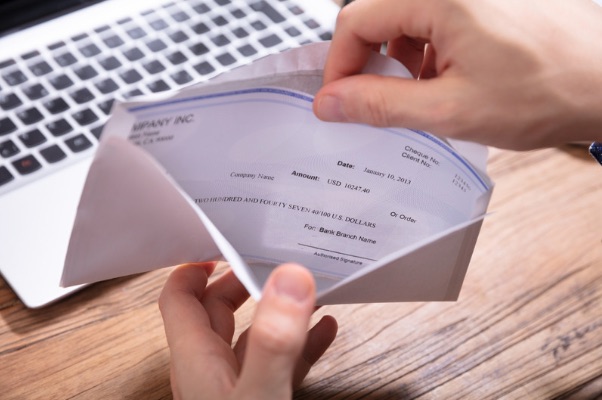8.23.22
What Is a Cashier’s Check?


If you’re like most people, you likely don’t use cashier’s checks very often; here’s what you need to know about this method of payment.
The most common time when people might use a cashier’s check is when making a large payment, such as a down payment on a vehicle or home. Thousands of cashier’s checks are used each day, but many people don’t know how they work. Whether you’re a buyer or a seller, here’s what you need to know about this form of payment.
A cashier’s check ensures safety for the seller
If you write a check from your personal checking account there is a possibility that the check could be returned for insufficient funds. With a cashier’s check, the seller of a car, home or any other item is assured that the check won’t bounce since it’s guaranteed by the bank or credit union that issued it.
Beware of scams
Legitimate cashier’s checks are very safe. However, just as some people counterfeit $20 bills, there are scammers who create fake cashier’s checks. If you are accepting a cashier’s check from a buyer, look for the following signs of a genuine cashier’s check:
- The issuing bank printed on the check is real.
- The check is for the amount agreed to, not more.
- Security features like watermarks, microprints, color-shifting ink and security threads. These features may be present on a fake check but will be of poor quality.
- Printed phone number of the issuing bank.
- Payee’s name printed on the check. A blank payee line is a sign of a fake.
When accepting a cashier’s check, understand that “funds available” are not the same as “funds cleared.” By law, a portion of the check must be available within a few days. The balance can be withheld until the check clears. Do not draw on funds until you know they have cleared.
If the cashier’s check is issued from a local bank, consider stopping by and asking them to verify if the check is genuine. If selling to an out-of-town buyer, ask them for a cashier’s check from a bank in your area. It’s more difficult to verify a cashier’s check from a bank in another, town, state or country.
How is a cashier’s check different than a money order?
Useful for smaller transactions, money orders can be purchased at many stores and are usually limited to a maximum of $1,000. However, they are not considered as secure as a cashier’s check because they’re backed by the store that issued it rather than a financial institution.
Cashier’s checks can be issued for any amount available.
How much does a cashier’s check cost?
Most banks and credit unions charge a fee of up to $15 for a cashier’s check. At Consumers, members only pay a $5 fee for cashier’s checks.
How to get a cashier’s check
Getting a cashier’s check is simple. Consumers members are welcome stop by one of our many convenient offices where they can get a cashier’s check for any amount available with cash or funds from their Consumers checking account or Consumers savings account.
Federally insured by NCUA




I have a cashiers check from consumers credit union I would like to know if it’s leggit
Hi Eulalio, please stop into an officer or give us a call at 800.991.2221 so we can look into it with you.